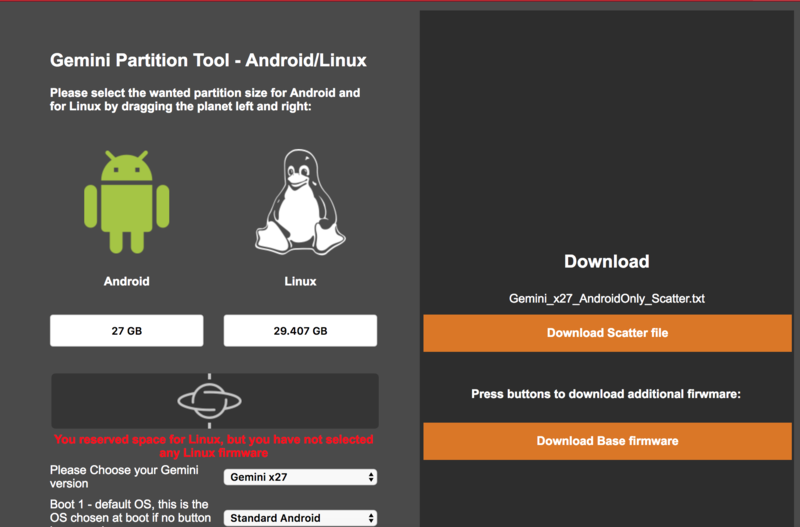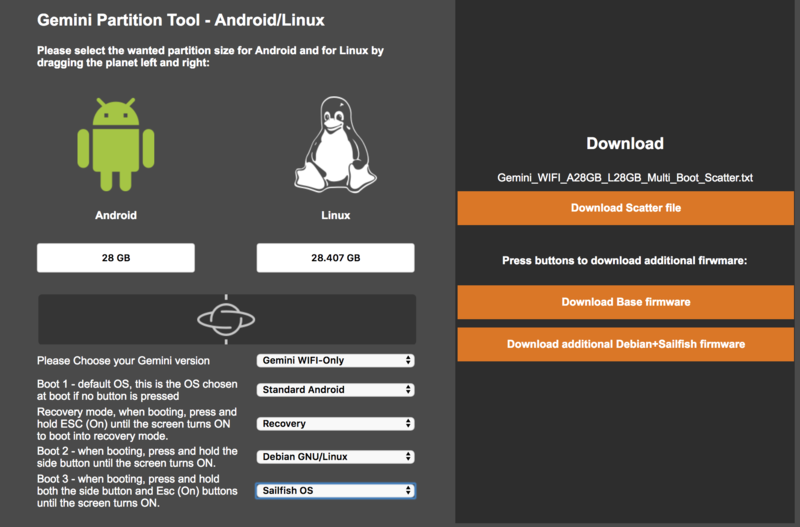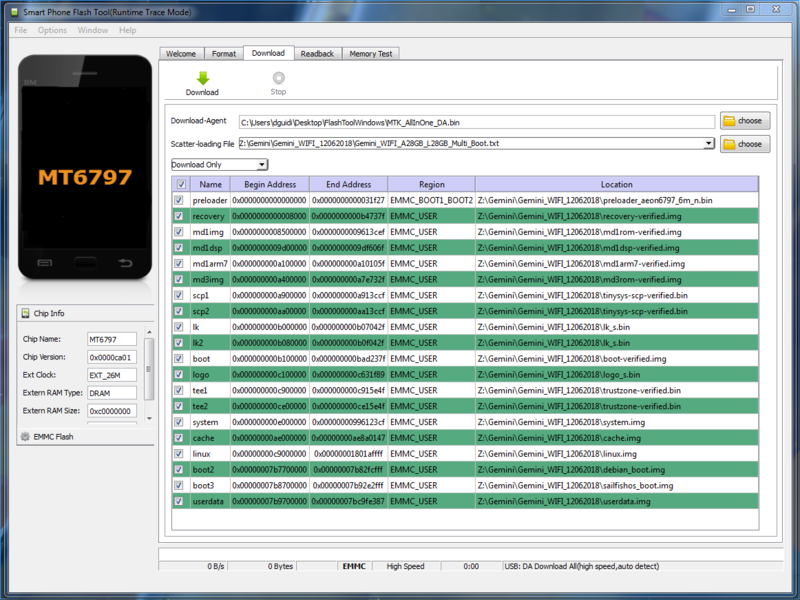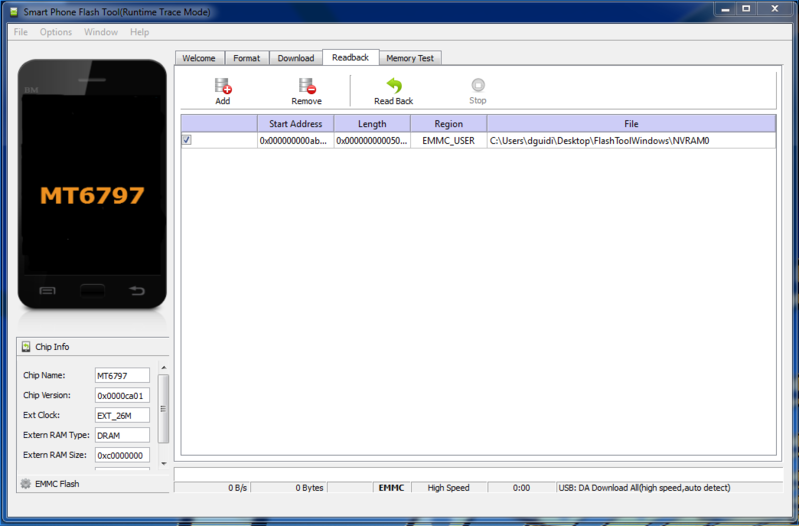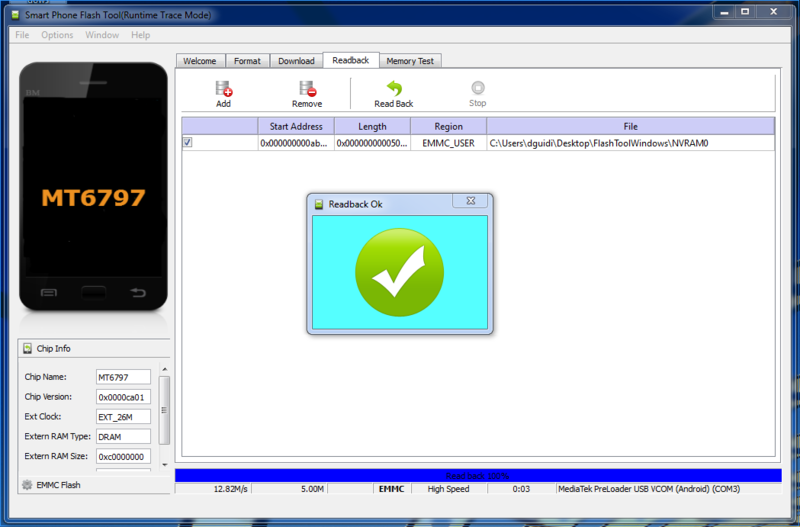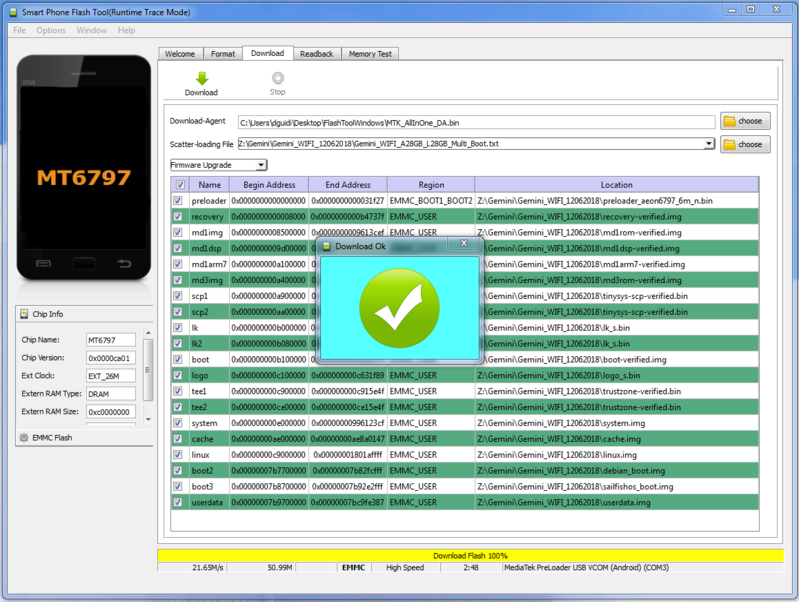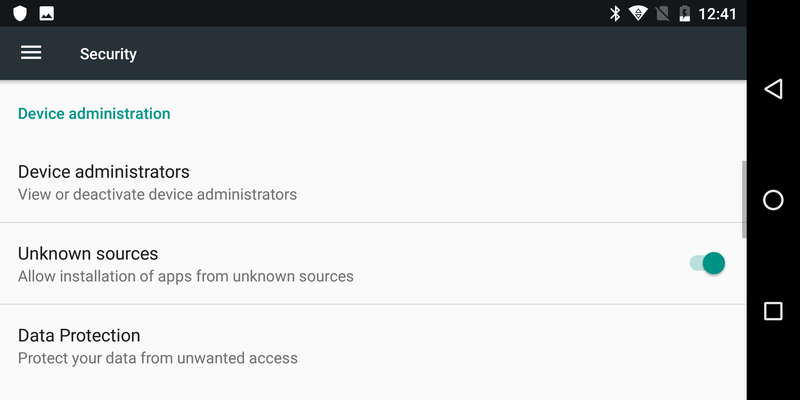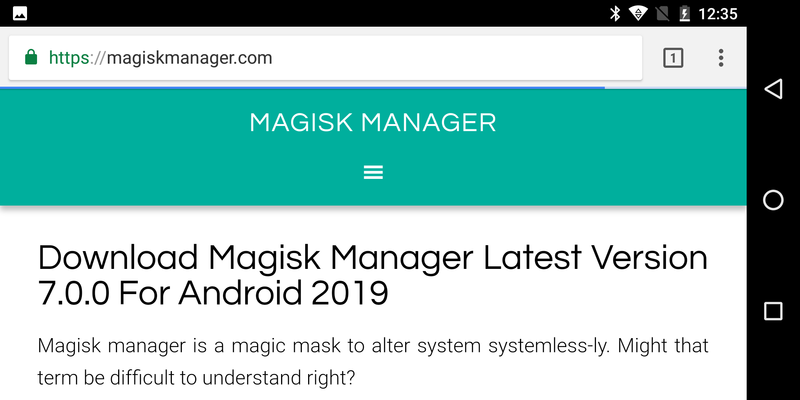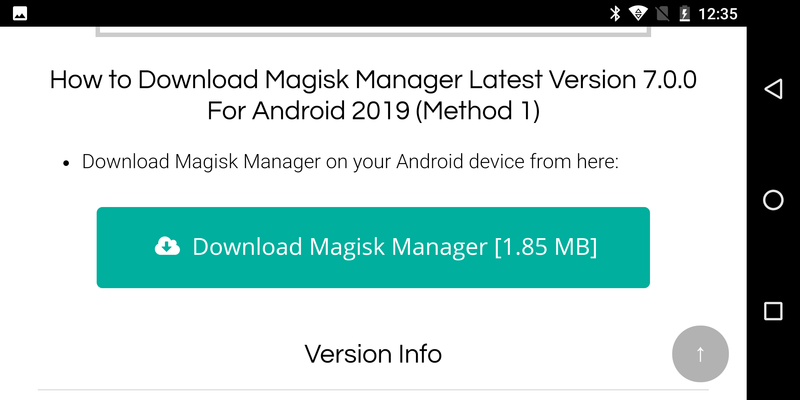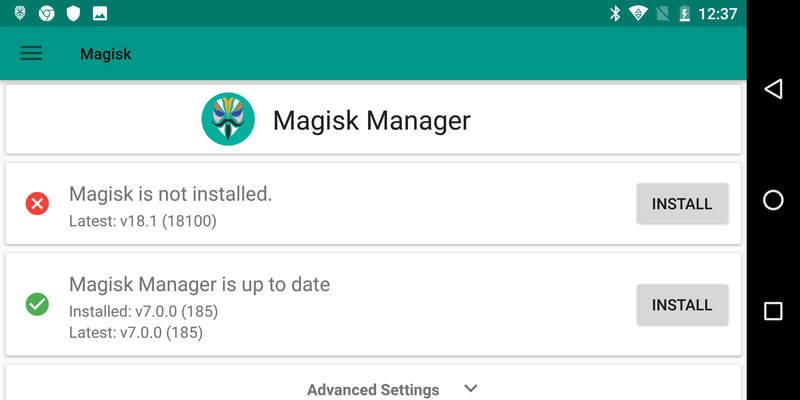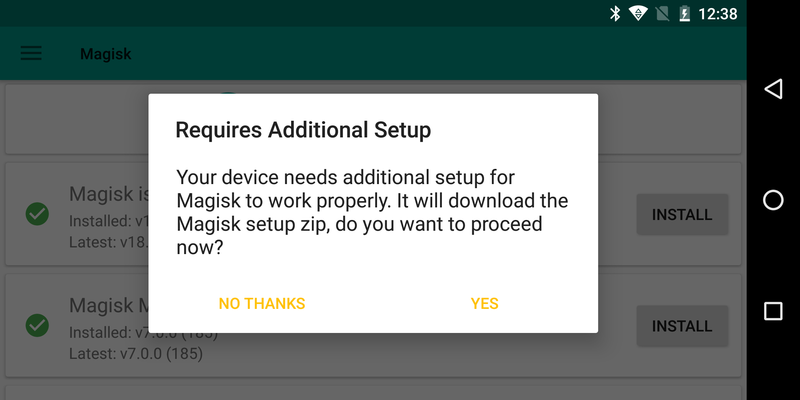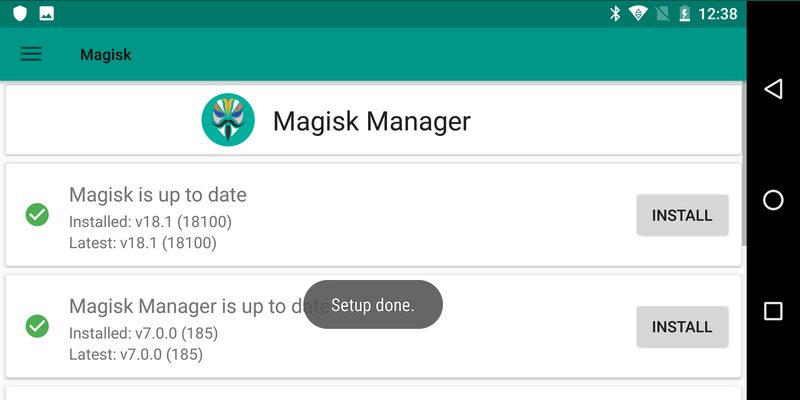Difference between revisions of "Linux Flashing Guide"
From Planet Computers
(→Flashing the Gemini Linux firmware) |
(→Backup the NVRAM partition) |
||
| (One intermediate revision by the same user not shown) | |||
| Line 153: | Line 153: | ||
| − | <span style="color: #252525; font-family: 'Source Sans Pro', sans-serif; font-size: 15.008px; font-style: normal; font-variant-ligatures: normal; font-variant-caps: normal; font-weight: 400; letter-spacing: normal; orphans: 2; text-align: start; text-indent: 0px; text-transform: none; white-space: normal; widows: 2; word-spacing: 0px; -webkit-text-stroke-width: 0px; background-color: #ffffff; text-decoration-style: initial; text-decoration-color: initial; display: inline !important; float: none;">Next, just click the </span><strong style="color: #252525; font-family: 'Source Sans Pro', sans-serif; font-size: 15.008px; font-style: normal; font-variant-ligatures: normal; font-variant-caps: normal; letter-spacing: normal; orphans: 2; text-align: start; text-indent: 0px; text-transform: none; white-space: normal; widows: 2; word-spacing: 0px; -webkit-text-stroke-width: 0px; background-color: #ffffff; text-decoration-style: initial; text-decoration-color: initial;">Read Back</strong><span style="color: #252525; font-family: 'Source Sans Pro', sans-serif; font-size: 15.008px; font-style: normal; font-variant-ligatures: normal; font-variant-caps: normal; font-weight: 400; letter-spacing: normal; orphans: 2; text-align: start; text-indent: 0px; text-transform: none; white-space: normal; widows: 2; word-spacing: 0px; -webkit-text-stroke-width: 0px; background-color: #ffffff; text-decoration-style: initial; text-decoration-color: initial; display: inline !important; float: none;"> button, connect your PC to the left end USB-C port on your Gemini and restart the Gemini. Once | + | <span style="color: #252525; font-family: 'Source Sans Pro', sans-serif; font-size: 15.008px; font-style: normal; font-variant-ligatures: normal; font-variant-caps: normal; font-weight: 400; letter-spacing: normal; orphans: 2; text-align: start; text-indent: 0px; text-transform: none; white-space: normal; widows: 2; word-spacing: 0px; -webkit-text-stroke-width: 0px; background-color: #ffffff; text-decoration-style: initial; text-decoration-color: initial; display: inline !important; float: none;">Next, just click the </span><strong style="color: #252525; font-family: 'Source Sans Pro', sans-serif; font-size: 15.008px; font-style: normal; font-variant-ligatures: normal; font-variant-caps: normal; letter-spacing: normal; orphans: 2; text-align: start; text-indent: 0px; text-transform: none; white-space: normal; widows: 2; word-spacing: 0px; -webkit-text-stroke-width: 0px; background-color: #ffffff; text-decoration-style: initial; text-decoration-color: initial;">Read Back</strong><span style="color: #252525; font-family: 'Source Sans Pro', sans-serif; font-size: 15.008px; font-style: normal; font-variant-ligatures: normal; font-variant-caps: normal; font-weight: 400; letter-spacing: normal; orphans: 2; text-align: start; text-indent: 0px; text-transform: none; white-space: normal; widows: 2; word-spacing: 0px; -webkit-text-stroke-width: 0px; background-color: #ffffff; text-decoration-style: initial; text-decoration-color: initial; display: inline !important; float: none;"> button, connect your PC to the left end USB-C port on your Gemini and restart the Gemini. Once booted, the flash tool will detect the unit and will write the NVRAM partition on a file on your hard disk called NVRAM0 (see screenshot below). It’s a good idea to keep this file as a backup, together with the customised Scatter file.</span> |
| + | |||
| + | <span style="color: #252525; font-family: 'Source Sans Pro', sans-serif; font-size: 15.008px; font-style: normal; font-variant-ligatures: normal; font-variant-caps: normal; font-weight: 400; letter-spacing: normal; orphans: 2; text-align: start; text-indent: 0px; text-transform: none; white-space: normal; widows: 2; word-spacing: 0px; -webkit-text-stroke-width: 0px; background-color: #ffffff; text-decoration-style: initial; text-decoration-color: initial; display: inline !important; float: none;">[[File:Screen_Shot_2018-06-21_at_10.51.50.png|800x527px|center|border]]</span> | ||
==Flashing the Gemini Linux firmware== | ==Flashing the Gemini Linux firmware== | ||
Latest revision as of 11:30, 26 February 2019
Contents
Introduction
This document will guide you through the necessary steps needed to flash your Gemini with a Linux or Android/Linux OS.
Please note: Flashing Android or Linux will delete any user data on the device. Please make sure you have a backup of any important data before starting!
- Install the FlashTool software on your Windows PC or Linux PC
- Customise your Gemini partition table. Using a simple tool, you will be able to specify the space you want to reserve for Linux and for Android. You will also be able to choose the firmware to download, at the moment we support Android, Rooted Android, Debian, Sailfish 3.0 Beta Community Edition, Kali Linux and TWRP.
- Flash the firmware on your device
Download and Install FlashTool on Windows
You can find the latest drivers here: Windows Flash Tool Drivers
Now that the drivers have been installed, you can download the latest Windows flash tool: Windows Flash Tool
Download and Install FlashTool on Linux
The following procedure has been tested on Debian 9.0, Ubuntu 18.04 (see notes below) and Fedora 28 (see notes below).
You can find the latest Linux flash tool software here: Linux Flash Tool
Once downloaded, extract the flash tool by typing:
tar -zxvf FlashToolLinux.tgz
Before running the flash tool you will need to add some rules to udev.
Create the blacklist file by typing (using either the "sudo command" or syntax or simply typing the command as root) :
sudo gedit /etc/udev/rules.d/20-mm-blacklist-mtk.rules
And inside the file put the following 2 lines:
ATTRS{idVendor}=="0e8d", ENV{ID_MM_DEVICE_IGNORE}="1"ATTRS{idVendor}=="6000", ENV{ID_MM_DEVICE_IGNORE}="1"
After that, restart the udev:
sudo service udev restart
Finally, run the flash tool application by entering into the FlashToolLinux folder and typing:
cd FlashToolLinux
sudo ./flash_tool.sh
Notes - Ubuntu 18.04
On Ubuntu you will need to install the following dependency:
sudo apt-get install libjpeg62
Notes - Fedora 28
On Fedora you will have to write the following command to allow applications running with root privileges to access the X server (this will fix the lines above for both gedit and flash_tool):
xhost +local:
Additionally you will have to restart the udev service by typing (or rebooting your machine):
udevadm control --reload-rules && udevadm trigger
Finally, you will need to install the following dependency:
sudo dnf install nas-libs-1.9.4-13.fc28.x86_64
Building the flash tool from source
You can also build the flash tool by yourself, the code is hosted on github: Flash Tool Source
Customise your Gemini partition table
If you choose to flash a Linux or Android-Linux firmware, then you will have to repartition your device, reserving some space for Linux and some for Android. To repartition your Gemini you will have to use our partition tool, available at http://support.planetcom.co.uk/partitionTool.html. A screenshot of the tool is provided below.
You can choose the partition size for Linux and Android by dragging the planet slider left or right. You can choose to have an Android-only Gemini, a multi boot Linux-Android or a Linux-only Gemini. Once you have selected the partition sizes you have to select your Gemini model using the appropriate drop down menu.
There are 3 Gemini versions, please make sure you select the right version for your device:
- WiFi-Only Gemini users should select "Gemini WIFI-Only".
- 4G Gemini users using x25 chip (early release Geminis) should select "Gemini x25"
- Gemini 4G x27 users should select the "Gemini x27" option.
If you are not sure about your Gemini version, just check under Settings -> Wireless & networks. If you see a menu called SIM cards, then you have an x27 Gemini, otherwise you have an x25 Gemini.
After selecting the partition size, you can select the operating systems to use for each boot mode. Gemini supports 4 boot modes (see the Linux boot notes section below for more information):
- Boot 1: This is the default booting option when no buttons are pressed.
- Recovery Mode: Esc (On) is pressed. This will always boot into overy mode.
- Boot 2: Side button is pressed.
- Boot 3: Esc(On) key is pressed and Side button is also pressed
As an example, the following screenshot shows a Gemini WIFI-Only model, configured with 28 GB for both Android and Linux, where the boot modes are set as:
- Boot 1: Standard Android
- Boot 2: Debian GNU/Linux
- Boot 3: Sailfish OS
After you made your selection, there are 3 modules to download using the buttons on the right:
- The Base firmware contains the basic Android firmware. This is the main component, it needs to be extracted to reveal the Gemini Base firmware folder. All the other component need to be copied/unzipped here.
- The Scatter file contains the definition of your Gemini partition, based on your selection. This needs to be copied into the firmware folder
- The optional Linux module (Debian, Sailfish 3.0 Beta for Gemini Community Edition, or Kali Linux) contains the additional Linux firmware. This needs to be unzipped inside the firmware folder
You should end up with the extracted Base firmware folder, containing also the scatter file and the unzipped optional Linux module.
NOTE: It is important to keep a backup of the custom scatter file that you created, you will need it each time you want to update your device (for example Android) without loosing your data.
Configuring Flash Tool
Use the choose button as in the following screenshot to load the scatter file that you will find inside the downloaded firmware. In particular:
- Download-Agent should be set to the file MTK_AllInOne_DA.bin, which is located in the FlashToolWindows or FlashToolLinux folder.
- Scatter-loading file should be set to the specific scatter file of the firmware that you customised, which is located in the firmware folder
Your screen should look like the following screenshot:
In particular, all the partitions should be checked. If you see any unchecked partitions in the list, make sure you unzipped the Linux module in the firmware folder and try again.
Backup the NVRAM partition
Before flashing the device with a different firmware it is a good idea to backup the current NVRAM partition. This partition stores key information for your Gemini, including the IMEI number. If it gets lost or damaged, your Gemini will not be able to take or receive calls.
The provided flash tool is already configured for your Gemini. To create a backup of your NVRAM partition, just click on the Readback tab and then on the Add button. A row will appear in the table as in the following screenshot.
Next, just click the Read Back button, connect your PC to the left end USB-C port on your Gemini and restart the Gemini. Once booted, the flash tool will detect the unit and will write the NVRAM partition on a file on your hard disk called NVRAM0 (see screenshot below). It’s a good idea to keep this file as a backup, together with the customised Scatter file.
Flashing the Gemini Linux firmware
To start the flashing process, just click the big Download button, connect your PC to the left end USB-C port on your Gemini and restart the Gemini. Once booting, the flash tool will detect the unit and will start flashing the device with the selected firmware.
The following screenshot shows a successfully completed flashing process:
Troubleshooting
We made efforts to make sure that the flash procedure is fail-safe, but sometimes background processes or other causes might interfere with the process. If this happens, you might experience an error such as "Failed to get PMT info", "Invalid ROM or PMT address" or "STATUS_DOWNLOAD_EXCEPTION".
If you experience this issue, please follow the actions below:
- Disconnect your Gemini from your PC
- Press and hold the Esc (On) key and the silver side button until the unit restarts (until the unit vibrate)
- Reboot your PC
- Try the flash process again, it should now complete without issues
Rooted Android notes
If you choose to flash the rooted Android firmware, remember that you will have to complete the process by installing Magisk Manager using the following steps.
- Allow the installation of unknown applications
- Navigate to https://magiskmanager.com
- Scroll down to 'Download Magisk Manager'. Click on the download button and install the application.
- Open the application. If you arre running the app in a non-rooted Android you will see the error 'Magisk is not installed'.
- When asked about Additional Setup, Tap on Yes and let the process complete.
- Congratulations, you are running rooted Android on your Gemini!
Linux boot notes
The multi-boot mechanism works as follows.
Starting from a switched OFF Gemini, press the Esc (On) key to start the unit until the Gemini vibrates. Once you feel the vibration you can choose the boot mode by pressing the following key combination:
- Boot 1: This is the default booting option when no keys or buttons are pressed.
- Recovery Mode: Esc (On) is pressed. This will always boot into recovery mode.
- Boot 2: silver right-end side button is pressed.
- Boot 3: Both Esc(On) key and silver right-end side button are pressed at the same time
Keep the keys/buttons pressed until the screen turns ON.


